A cool mist enveloped us as we stood outside the airport, waiting for our taxi to Old Town Tallinn. Lightheaded and exhausted, we quickly realized that taking a 1:30 AM flight had been more challenging than anticipated.
However, our fatigue soon gave way to excitement as we entered Old Town. Cobblestone streets wound their way through striking Gothic architecture. Vibrant facades, inviting sidewalk cafes, and quaint shops set a charming tone. Towering spires pierced the skyline, while historic landmarks offered intriguing glimpses into the city’s rich past. Narrow alleyways beckoned us to explore their hidden secrets. Enthralled and energized, we couldn’t wait to begin our adventure.
The World’s Best Retirement Havens for 2026
The World’s Best Retirement Havens for 2026
24 Countries Compared, Contrasted, Ranked, and Rated. You don’t have to be rich to enjoy a pampered retirement, you just need to know where to go. With our 35th Annual Global Retirement Index, our experts hand you a detailed roadmap. Details—and a Special Offer—Here

By submitting your email address, you will receive a free subscription to IL Postcards, Overseas Dream Home, The Untourist Daily and special offers from International Living and our affiliates. You can unsubscribe at any time, and we encourage you to read more about our Privacy Policy.
28 Days in the Baltics: Why We Were There and What You Need to Know
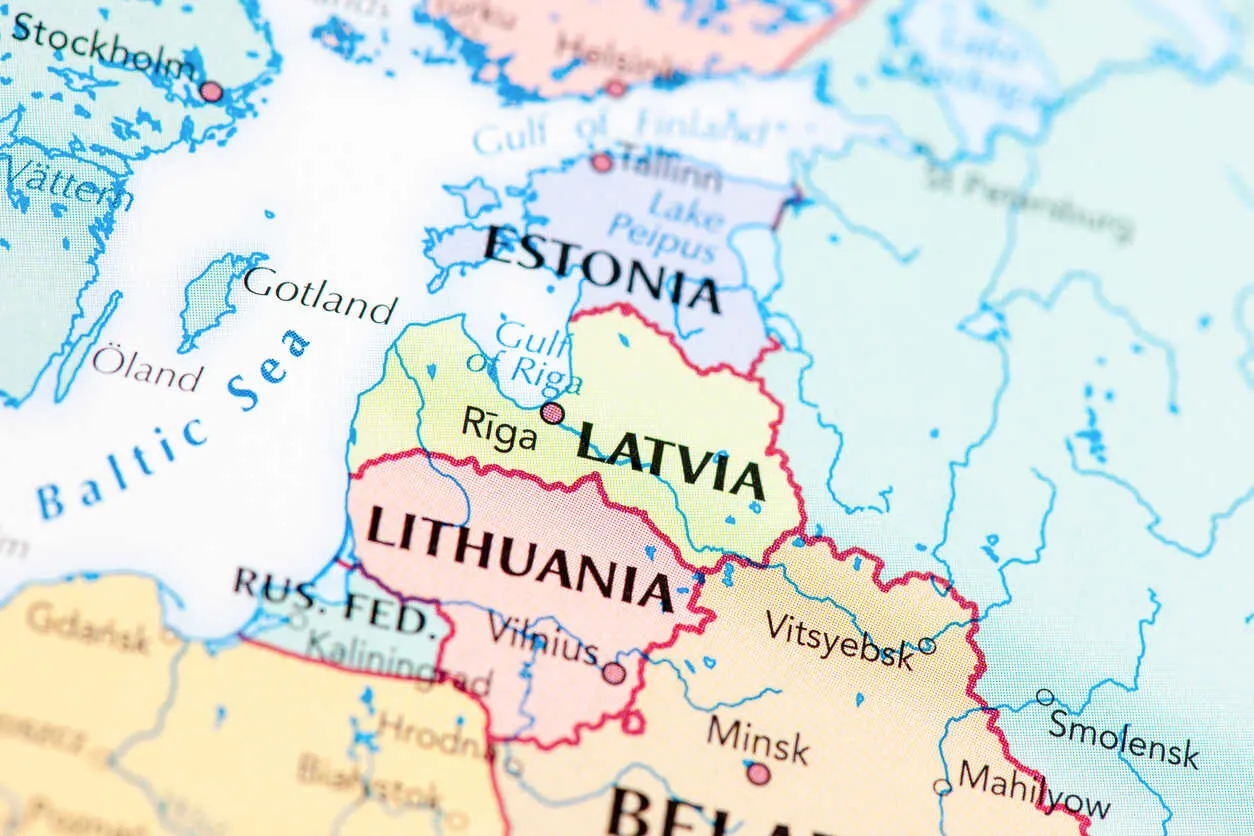
As travel scouts, we immerse ourselves in destinations that could become our next nomadic retirement home—or perhaps yours. We strive to live like locals: eating what they eat, shopping where they shop, and enjoying the same leisure activities. Typically, we stay in neighborhood apartments rather than tourist areas, but in the Baltics, we discovered that hotels offered incredible bargains.
The Baltics—also referred to as the Baltic States, Baltic Countries, Baltic Nations, Baltic Republics, or Baltic Lands—comprise the geopolitical grouping of Estonia, Latvia, and Lithuania. Located in Northern Europe, these countries lie along the eastern shore of the Baltic Sea, with Estonia to the north, Latvia in the center, and Lithuania to the south. The Gulf of Finland borders them to the north and the Baltic Sea to the west, while their land borders include Belarus and Russia to the east, and Poland to the south.
Each country is a member of NATO, the European Union, the Eurozone, the Council of Europe, and the OECD. They work closely together on policies related to security, energy, transportation, and defense.
Estonia
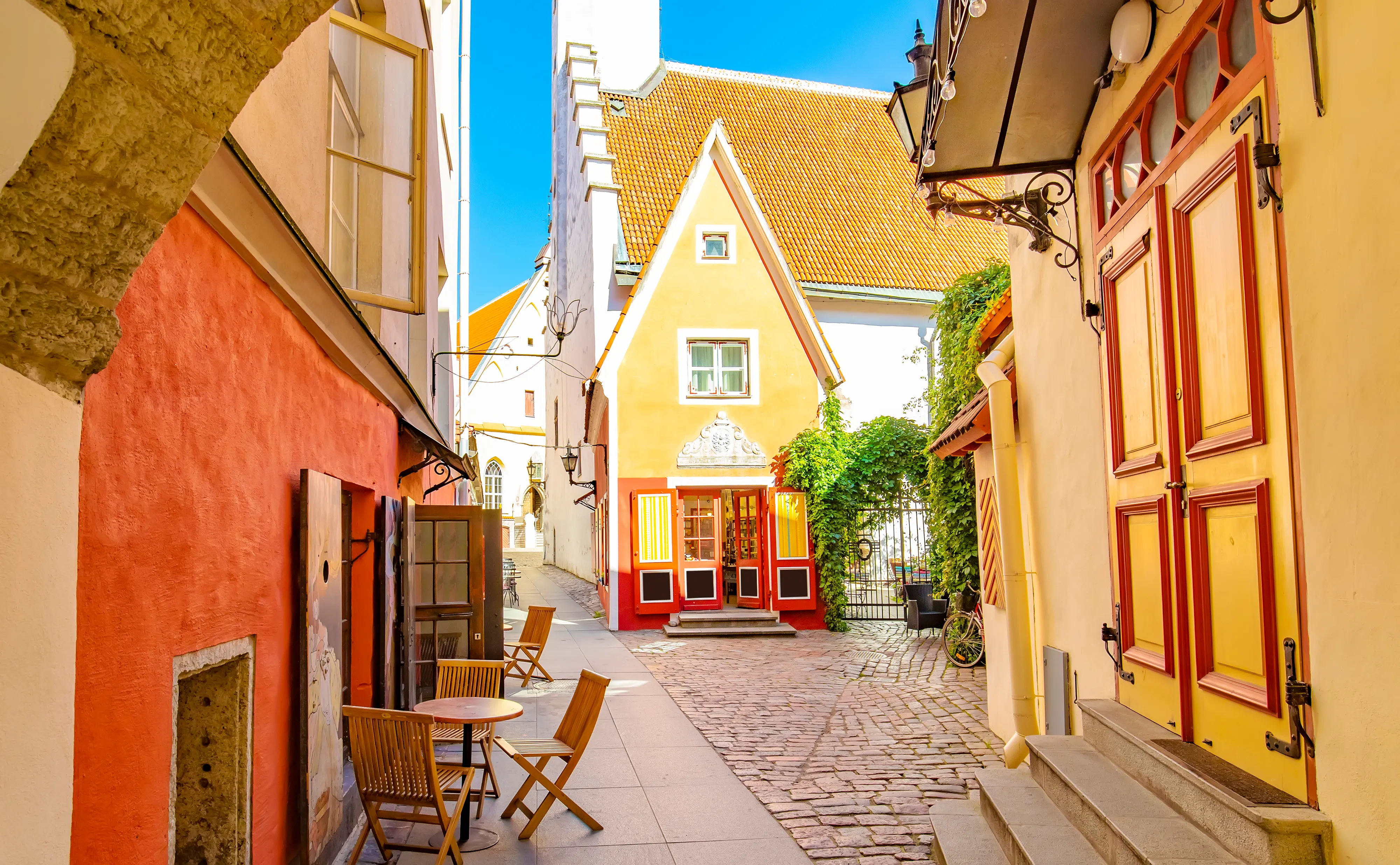
Day 1
We arrived in Tallinn at 6:00 AM on an AirBaltic flight from Malta. The small airport was modern and efficient, allowing us to quickly retrieve our checked bags before taking a taxi to the St Olav Hotel in Old Town. This historic building, originally a private residence dating back to 1437, has served many purposes over the centuries. Today, it’s a four-story labyrinth of winding passageways and numerous staircases—if only the walls could talk.
Our room, a cozy second-floor space overlooking a tree-filled courtyard, wasn’t ready when we arrived. We called it our “tree house” because the large window gave us a view directly into the foliage. At €30 ($32.49) per night, the room was a bargain and included a hot breakfast each morning.
To pass the time, we checked in, stored our bags, and headed out to explore Old Town in search of breakfast. Cobblestone streets led us through the enchanting medieval district, but at that early hour, nothing was open. We eventually found ourselves in Town Hall Square, a market area in use since the 13th century.
At 7:00 AM, the square was eerily quiet. Sidewalk cafes were empty, shops were closed, and the fanciful Dachshund-shaped bench sat unoccupied. Taking advantage of the calm before the inevitable bustle, we photographed the empty streets, stone arches, narrow lanes, and Old Town’s unique architecture.
By 7:30 AM, we returned to the St. Olav Hotel for breakfast, followed by some relaxed people-watching in the lobby. At 10:00 AM, we ventured out again to continue exploring until rain drove us indoors. We sought refuge in a coffee shop, sipping local cider and writing postcards we’d picked up at the Visitor Center nearby. Sending ourselves a postcard has become a favorite travel tradition—a simple yet meaningful souvenir.
To escape the rain, we visited the Estonian History Museum and Great Guild Hall. This fascinating museum not only provided us with an understanding of Estonia’s history but also gave Kevin the chance to play king. We recommend this as your first stop in Tallinn—it offers valuable context for the beautifully preserved buildings throughout the city and highlights the crucial role of merchants in Tallinn’s development.
For lunch, we found a small café serving dark rye bread and mulgikapsad—a hearty stew made with pork, sauerkraut, and barley.
That afternoon, the rain kept us indoors at the St. Olav, where we settled into our now-ready room, set up our workstations, and photographed the hotel for a scouting report. Dinner was simple but satisfying: sandwiches and a bottle of wine from a nearby deli. Exhausted, we fell asleep to the Olympics, with an Estonian announcer narrating the swimming events.
Day 2
After breakfast at the hotel, we returned to Town Hall Square to explore its cafes and shops. We discovered that most establishments offered menus in both English and Estonian, although street signs were exclusively in Estonian.
Later, we embarked on a guided tour with Tales of Reval, a unique street performance and walking tour company. Our costumed guide brought Old Town’s colorful history to life, combining education with entertainment during the three-hour tour. Over a glass of wine afterward, we learned more about the company’s mission to preserve Tallinn’s history in an engaging way. They succeeded admirably.
Day 3
At 5:00 AM, we took a taxi to the waterfront and boarded a massive ferry bound for Helsinki, Finland—55 miles across the Baltic Sea. The three-hour crossing was relaxing and offered us the chance to watch a stunning sunrise.
Though our time in Helsinki was brief, we made the most of it. We visited the iconic Helsinki Cathedral, where we enjoyed an organ concert, and caught a military parade featuring horses and a band. At the central market, we succumbed to hunger and, somewhat unexpectedly, found ourselves enjoying dim sum at a Chinese restaurant—delicious, albeit unplanned.
We barely made it back in time for the return ferry to Tallinn. The three-hour voyage back felt like a celebration, complete with live music, dancing, and lively passengers. Dinner on board consisted of simple fare from the snack bar.
Pro Tip: If you plan to visit Helsinki, stay overnight to fully experience the city. We regret not doing so.
Days 4 & 5
The next two days were spent walking Old Town Tallinn, immersing ourselves in its rich history and architecture. We discovered medieval castles, cathedrals, churches, and 13th-century residences alongside fortress walls, towers, and museums. Town Hall Square, shops, and cozy cafes offered ample opportunities for exploration and relaxation.
Learning from Expats
We dedicated two afternoons to interviewing expats living in Estonia for an International Living article. What we discovered was a country remarkably welcoming to expats from around the world. Estonia offers a variety of visa options, including the Digital Nomad visa and the D-visa, designed for long-term stays, such as those for pensioners.
The cost of living is significantly lower than in North America, making it an attractive option for budget-conscious retirees. State medical care is accessible to all residents and citizens, and English is widely spoken, which eases day-to-day living for expats. While the weather is generally mild for most of the year, winters are known to be cold and dark. Many expats choose to escape to sunnier climates during the winter months, returning to Estonia in early spring.
Days 6 and 7
We relocated to the Nordic Forum Hotel, just two blocks from Old Town Tallinn, where the hotel’s PR company invited us to conduct a thorough scouting report. Over the course of a day and evening, we evaluated the hotel from top to bottom. Our deluxe double room underwent a “white glove” inspection, which it passed with flying colors. Meals at the hotel restaurant, drinks in the bar, and a dip in the indoor pool all exceeded our expectations. The friendly staff and inviting ambiance further enhanced the experience. We wholeheartedly recommend this four-star hotel to anyone visiting Tallinn—the room rates are a steal compared to comparable American hotels.
Our scouting reports also include the area surrounding a property, so we spent an evening and a day exploring nearby attractions. Directly across the street, Tammsaare Park offered a peaceful retreat with its lush lawns, shady trees, and meandering pathways. The park’s standout features included bronze sculptures, cooling fountains, picnic tables, and plenty of benches for relaxing.
A short five-minute walk from the hotel led us to several cultural venues, including the Estonian Drama Theater, Estonia National Opera, Estonian Theater and Music Museum, and Tallinn City Life Museum. Just behind the Nordic Forum Hotel lies the Rotermann Quarter, a vibrant hub for dining and shopping. This area perfectly combines modernity with historical charm, making it a must-visit part of Tallinn.
Latvia
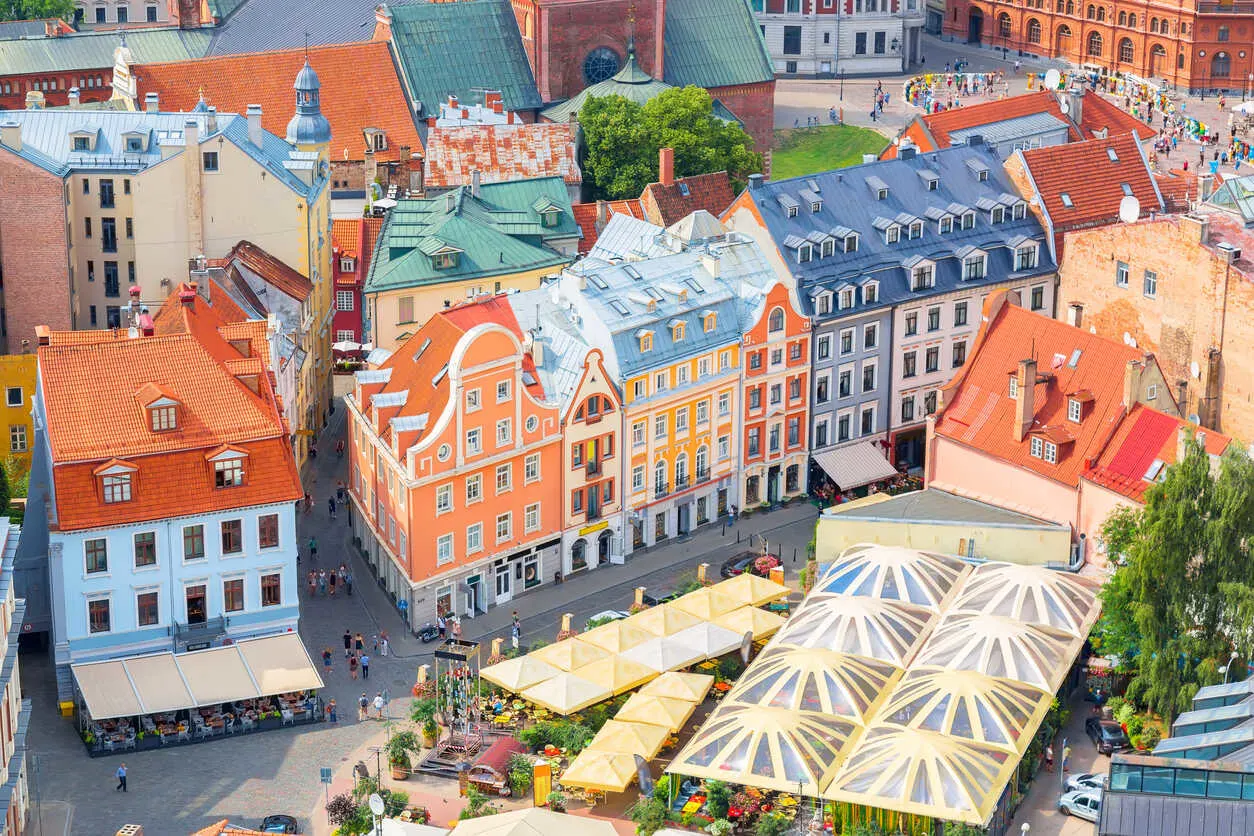
Day 8: A Bus to Latvia
On Monday, August 12, we boarded a LuxExpress bus for the 193.5-mile journey from Tallinn, Estonia, to Riga, Latvia. The 4.25-hour trip was, without question, the best bus experience we’ve ever had. LuxExpress Lounge buses feature Relax Seats with extra legroom, adjustable footrests, fold-down tray tables, and generous reclining space. Each seat also has its own multimedia screen with access to movies and live TV. Wi-Fi, air conditioning, and onboard toilets add to the comfort and convenience.
We arrived in Riga at 12:30 PM and took a taxi to the Wellton Centrum Hotel & SPA, located in Old Town Riga. With our room unavailable until 3:00 PM, we checked in, stored our bags, and set off to find a spot for lunch. After a long and leisurely meal, we returned to the hotel, settled into our room, and connected with Latvia Travel to coordinate their support for our scouting mission. That evening, we explored the hotel’s restaurant and spa, enjoyed dinner at the Cydonia Gastropub, had a nightcap in the hotel bar, and retired early for the night.
Day 9: Touring Old Town Riga
After a good night’s rest and a hearty breakfast, we were ready to explore Old Town Riga. We met our English-speaking guide, Andra Brice, in the hotel lobby and embarked on a five-hour walking tour. Andra provided a wealth of information about Riga’s history and culture, patiently accommodating our frequent photography stops while ensuring we fully experienced the district’s charm.
Old Town Riga, a UNESCO World Heritage Site, offers a captivating blend of medieval and Art Nouveau architecture. Its cobblestone streets are lined with historic buildings, each with a story to tell. Iconic landmarks like the House of Blackheads and St. Peter’s Church dominate the skyline, while sidewalk cafes and artisan shops invite visitors to linger. The lively atmosphere is further enriched by bustling marketplaces and talented street performers, creating a vibrant tapestry of Latvian culture. Pedestrian-only streets, hidden alleyways, and picturesque squares make Old Town a window into the heart and soul of Latvia.
Lunch in the Park
For lunch, we chose Kolonade, a superb restaurant nestled in the heart of Bastejkalna Park. With its expansive windows, dining felt like an al fresco experience amidst the park’s lush greenery. The highlight of our meal was a shrimp salad brimming with fresh shrimp from the pristine waters of the Baltic Sea—a feast for all the senses.
After lunch, we took a boat tour with Riga By Canal. Aboard a charming wooden canal boat, we enjoyed a peaceful hour-long journey along Old Town and the Daugava River, providing a unique perspective of the city.
Day 10: A Road Trip to Kuldīga
On August 14, we set off for Kuldīga, a small, picturesque town renowned for its history and charm. Along the way, we stopped in Sabile Town for a walk around the village and a relaxing lunch.
Sabile Town is nestled in the scenic Abava River Valley and is home to the oldest vineyard in the Baltic States. The village’s highlights include the Sabile Hillfort ruins, stunning church architecture, and a captivating art gallery housed in a former synagogue that showcases works by local artists. Scenic riverbank walks and glimpses of vintage photos memorializing Jewish families from before WWII add layers of history and beauty to the experience.
Kuldīga itself is a hidden gem. Its cobblestone streets are lined with well-preserved wooden houses and historic buildings, creating an atmosphere of timeless charm. The town is famous for the Venta Waterfall—the widest waterfall in Europe—and is a UNESCO World Heritage Site. Visitors can enjoy local delicacies at quaint sidewalk cafes, immerse themselves in the vibrant art scene, or simply soak in the tranquil surroundings.
We stayed at Jēkaba Sēta, a delightful small hotel and restaurant housed in several historic buildings in the heart of Old Town Kuldīga. Breakfast included delicious cheese blintzes, so good that we couldn’t resist having seconds.
Day 11: A Road Trip to Jūrmala
The next day, we drove to Jūrmala, Latvia’s most famous beach town. Located a short drive from Riga, Jūrmala is a stunning seaside resort known for its sandy beaches, fresh air, and unique wooden architecture.
Stretching along the Gulf of Riga, Jūrmala offers a relaxing environment with beautiful landscapes and a vibrant cultural scene. The town frequently hosts festivals, concerts, and exhibitions showcasing local arts and traditions. Renowned for its spa treatments, thermal waters, and wellness centers, Jūrmala is a destination designed for rejuvenation.
We stayed at Hotel Jurmala Spa, a modern hotel featuring a large spa and pool, as well as spotless and stylishly furnished restaurants and lounges. During the summer, the hotel fills up quickly, as it’s a favorite vacation spot for Baltic locals.
For lunch, we dined at Majorenhof, an inviting indoor/outdoor restaurant along the pedestrian-only promenade. The meal included kartupeļu pankūkas (potato pancakes), fried dark rye bread with garlic cheese dipping sauce, šaltibarščiai (cold beet soup), and oysters—all locally sourced and fresh from the season.
Day 12: A Road Trip to Great Ķemeri Bog
Great Ķemeri Bog, an expansive wetland covering over 8,895 acres, is part of the Ķemeri National Park and renowned for its unique biodiversity and breathtaking landscapes. The area is home to an array of flora and fauna, including rare species like the Eurasian Marsh Harrier and sundew plants. Visitors can explore well-maintained boardwalks that wind through the bog, offering views of tranquil pools, vibrant mosses, and flowering plants. This serene haven is a paradise for nature lovers and birdwatchers, offering excellent opportunities for hiking and photography.
After our visit, we returned to Riga and checked into the Hilton Garden Inn Old Town Riga. Once settled, we attended the Street Food Festival, an energetic and fun-filled event. Food trucks and vendors offered a wide variety of tempting treats, from ice cream to steaks to tacos, while live entertainment, including music and mime performances, created a festive atmosphere.
Day 13: Exploring Vērmane Garden
We ventured beyond Old Town to visit Riga’s oldest park, Vērmane Garden. To our delight, an arts and crafts fair was in progress, featuring booths showcasing creations from local artists and craftsmen. We enjoyed photographing the event and the park’s amphitheater, which hosts musical and theatrical performances.
For lunch, we dined at Lido Vermanitis, a cafeteria-style eatery known for its traditional Lithuanian and Baltic cuisine. The food was fantastic and budget-friendly. Lido has several locations throughout Riga, and we consider any Lido Restaurant a “must-eat-at” experience during a visit to the city.
Days 14 & 15: Exploring Bauska County and Sigulda
Bauska County
We began the day with an early drive to Bauska County. Our first stop was the village of Bauska, where we toured the Bauska Castle Museum, a medieval fortress rich in historical significance. For lunch, we visited Mezs Kungs, a restaurant specializing in sustainably sourced wild game from local forests.
After lunch, we made our way to Rundāle Palace, an exquisite 15th-century Baroque architectural masterpiece. The palace’s stunning gardens and opulent interiors transported us back in time, and our guided tour provided valuable insight into the era’s history.
Sigulda
Next, we drove to Sigulda, a town celebrated for its natural landscapes and medieval castles. Highlights included the iconic Turaida and Sigulda Castles. This region is also a hub for outdoor activities, such as hiking and bobsledding, which attract adventure enthusiasts year-round.
That evening, we stayed at Hotel Sigulda, a comfortable and budget-friendly lodging with a spa. During our stay, we explored a photo gallery showcasing an Olympic medalist from Sigulda in bobsledding, a winter sport deeply rooted in the town’s culture.
Castle Hopping
Sigulda offered a wealth of castle-hopping experiences. We visited the medieval Cēsis Castle, which offered incredible views, and Āraiši Lake Castle Archaeological Park, a reconstructed medieval village situated on an island. Our exploration also took us to the Āraiši Windmill, where we learned about the critical role of millers in medieval times.
We concluded the day by returning to Riga and enjoying dinner at the Wellton Centrum Hotel & SPA.
Day 16: Riga’s Art Nouveau and Central Market
Art Nouveau Tour
Riga is a treasure trove of Art Nouveau architecture, characterized by intricate facades, flowing lines, and ornate decorations. Dating back to the early 20th century, these buildings combine exceptional style and craftsmanship. With over 900 examples, Riga is one of Europe’s finest showcases of this architectural style.
Central Market
After lunch with the Latvia Travel team, we visited Riga Central Market, one of Europe’s largest markets and a UNESCO World Heritage Site. Housed in five former blimp hangars, the market features an impressive variety of goods, from fresh produce to clothing and artisanal items. It’s an ideal place to eat your way through Latvia, stock up on picnic supplies, or browse for unique finds. A visit to Riga wouldn’t be complete without exploring this iconic market.
The World’s Best Retirement Havens for 2026
The World’s Best Retirement Havens for 2026
24 Countries Compared, Contrasted, Ranked, and Rated. You don’t have to be rich to enjoy a pampered retirement, you just need to know where to go. With our 35th Annual Global Retirement Index, our experts hand you a detailed roadmap. Details—and a Special Offer—Here

By submitting your email address, you will receive a free subscription to IL Postcards, Overseas Dream Home, The Untourist Daily and special offers from International Living and our affiliates. You can unsubscribe at any time, and we encourage you to read more about our Privacy Policy.
Lithuania
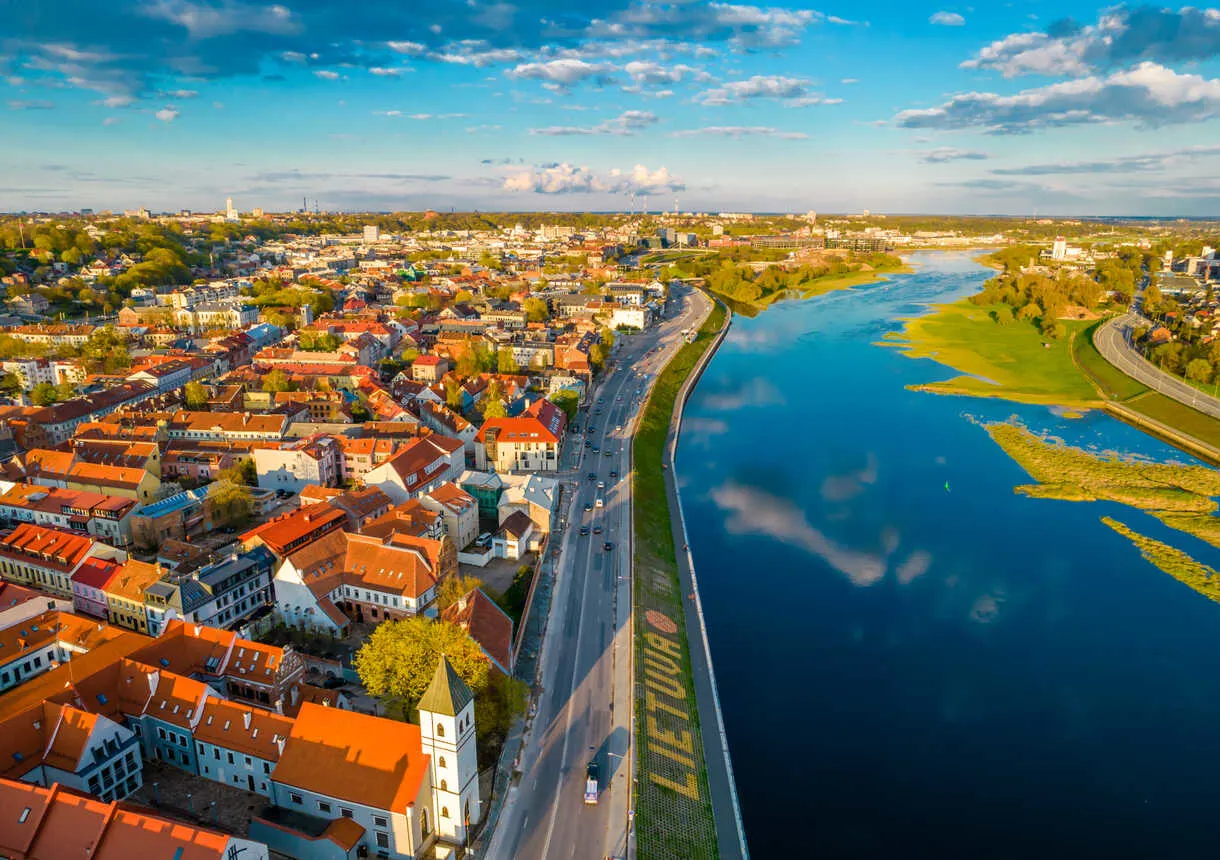
Day 17: Farewell to Latvia and On to Lithuania
At 10 AM, we boarded a bus bound for Kaunas, Lithuania, with a picnic lunch in hand. The comfortable four-hour trip was uneventful. Upon arrival, we took a taxi to our Airbnb, only to find ourselves in what felt like an art exhibit.
Kiemo Galerija (Yard Gallery)
Our Airbnb was part of Kiemo Galerija, a unique open-air art exhibit and memorial. Before World War II, the building housed 36 apartments, primarily occupied by Jewish families. Today, the courtyard walls feature haunting memorials to those residents who were sent to concentration camps, murdered, or disappeared. These images are interwoven with whimsical modern art, creating a poignant blend of remembrance and creativity.
The flat itself was comfortable and centrally located, but the art in the courtyard captivated us. Each day, we explored and photographed works that stirred deep emotions, evoking tears, joy, and countless questions. Kiemo Galerija was an unexpected yet profoundly moving highlight of our journey.
Days 18–23: Exploring Kaunas
After the whirlwind pace of Riga, we slowed down in Kaunas, enjoying a more relaxed schedule. Staying close to our art gallery flat, we found plenty to keep us entertained within a mile’s radius.
One of our favorite activities was walking the streets in search of street art. This colorful and creative medium brought vibrancy to the city and showcased the talent of local artists. Along the way, we stumbled upon local markets and street vendors, where we purchased fresh produce and meats to prepare meals in our flat.
We also visited the M. K. Čiurlionis National Museum of Art, where we were pleasantly surprised to find free admission that day. The museum showcased an impressive range of Lithuanian art spanning two centuries and multiple genres. Another highlight was the Kaunas Zoological Museum, where high-quality exhibits and dioramas kept us mesmerized for hours.
Our days were spent exploring churches, parks, and additional street art installations. We strolled along the Nemunas River Promenade and lingered at sidewalk cafes along the pedestrian-only Boulevard. These explorations gave us insights into daily life in Kaunas and illuminated aspects of Lithuania’s history and natural beauty.
Our one venture beyond our neighborhood was to Old Town Kaunas. Arriving by taxi early on a Saturday morning, we found the square nearly deserted—a perfect opportunity for uninterrupted photography. Later, while enjoying lunch at a sidewalk café, we noticed several weddings taking place at nearby churches. According to our server, Old Town churches are popular wedding venues. We sat back and enjoyed watching the festivities, feeling like invited guests to the celebrations.
Days 24–27: Old Town Vilnius
A Scenic Journey to Vilnius
On Day 24, we boarded an LTG Link train to Vilnius. The one-hour ride was one of our favorite experiences, thanks to the modern, double-decker train and its comfortable seating. Choosing seats on the upper deck gave us a stunning bird’s-eye view of the countryside, villages, and eventually, the city of Vilnius.
Upon arrival, we taxied to the Congress Avenue Hotel, a four-star property ideally situated in the heart of Old Town Vilnius.
Exploring Old Town Vilnius
Old Town Vilnius, a UNESCO World Heritage Site, is renowned for its medieval architecture and lively atmosphere. Its cobblestone streets are lined with colorful Baroque buildings, sidewalk cafes, and charming boutiques. Picturesque squares invite you to mingle with locals, expats, and tourists alike.
We spent much of our time wandering the narrow streets and lanes, discovering iconic landmarks such as St. Anne’s Church, Vilnius University, Palace of the Grand Dukes, Vilnius Cathedral, Gediminas Castle Tower, and Gates of Dawn.
One of our favorite experiences was attending the Vilnius City Fiesta, a lively festival that transformed the streets of Old Town. Tents, stages, booths, and tables filled the area, hosting an array of activities, including arts and crafts fairs, musical and theatrical performances, food and drink stalls, family-friendly entertainment, and endless opportunities for people-watching—all just steps from our hotel.
The Republic of Užupis
A highlight of our visit to Vilnius was exploring the Republic of Užupis, a bohemian arts district that declared itself an independent “republic” in 1997. Complete with its own president, constitution, and flag, Užupis exudes creativity. Its streets are adorned with colorful murals, galleries, sculptures, and the Užupis Angel statue, symbolizing the area’s artistic spirit. Užupis frequently hosts cultural events that attract artists and free thinkers from around the world.
The Amber Museum-Gallery
The Amber Museum-Gallery is a must-visit for anyone interested in natural history and art. Located in a Neoclassical building, it features a fascinating collection of amber artifacts, including jewelry and prehistoric inclusions of insects and plants. Interactive exhibits offer insights into the cultural significance of amber in Lithuania. It’s an excellent first stop before shopping for authentic amber souvenirs, as it helps visitors distinguish genuine pieces from fakes.
A Peaceful Boat Tour
We also enjoyed a peaceful boat tour along the Vilnia River, a relaxing and affordable way to see the city from a different perspective. Several docks along the river offer tours, most of which don’t require advance booking.
Dining in Vilnius
Breakfasts at our hotel were hearty and satisfying. For lunch, we often enjoyed picnics in the park, while dinners took us to the numerous cafes and restaurants along Vilniaus Street. This vibrant hub of Old Town is lined with cafes, shops, and historic architecture, making it perfect for leisurely strolls. We also tried the food court at the G9 Shopping Mall, which surprised us with its high-quality ethnic cuisine from around the world.
Interested in Lithuania’s highlights? Explore our full story on Vilnius, Kaunas, and more.
Day 28: Returning to Gozo
On our final day, we boarded our flight back to Gozo, reflecting on an incredible journey through the Baltics.
What Would We Do Differently?
Our trip was delightful and informative, and there’s very little we’d change. However, in hindsight, we wish we had spent more time exploring Estonia, slightly less time in Kaunas, and additional time discovering the wonders of Vilnius.
Conclusion
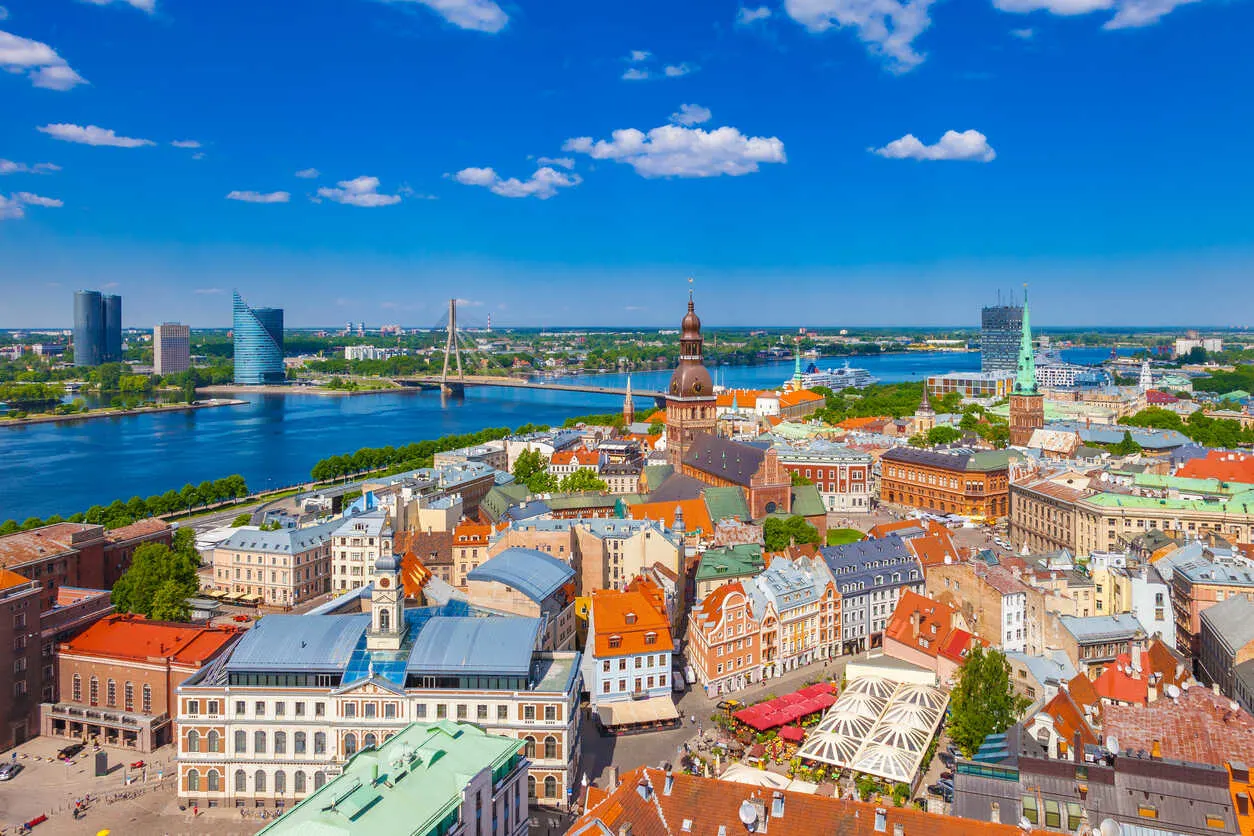
Could the Baltics be our next retirement home? Without a doubt, yes! While Estonia, Latvia, and Lithuania are three distinct countries, they share many appealing similarities. Each boasts scenic landscapes that include seashores, forests, and rolling hills or mountains. The food is wholesome, clean, and locally sourced, and English is widely spoken, making it easy for expats to settle in. Best of all, the cost of living is remarkably reasonable, and residency permits are accessible in all three countries.
While the weather is mild and pleasant for much of the year, winters can be cold and dark—a factor that would likely send us back to the Mediterranean for a couple of months. But for digital nomads like us, that flexibility is part of the charm.
If Estonia, Latvia, or Lithuania piques your interest as a potential retirement destination, don’t hesitate—book a flight to the Baltics. Immerse yourself in the local culture, live like a local, and explore all that these captivating countries have to offer.
The World’s Best Retirement Havens for 2026
The World’s Best Retirement Havens for 2026
24 Countries Compared, Contrasted, Ranked, and Rated. You don’t have to be rich to enjoy a pampered retirement, you just need to know where to go. With our 35th Annual Global Retirement Index, our experts hand you a detailed roadmap. Details—and a Special Offer—Here

By submitting your email address, you will receive a free subscription to IL Postcards, Overseas Dream Home, The Untourist Daily and special offers from International Living and our affiliates. You can unsubscribe at any time, and we encourage you to read more about our Privacy Policy.
